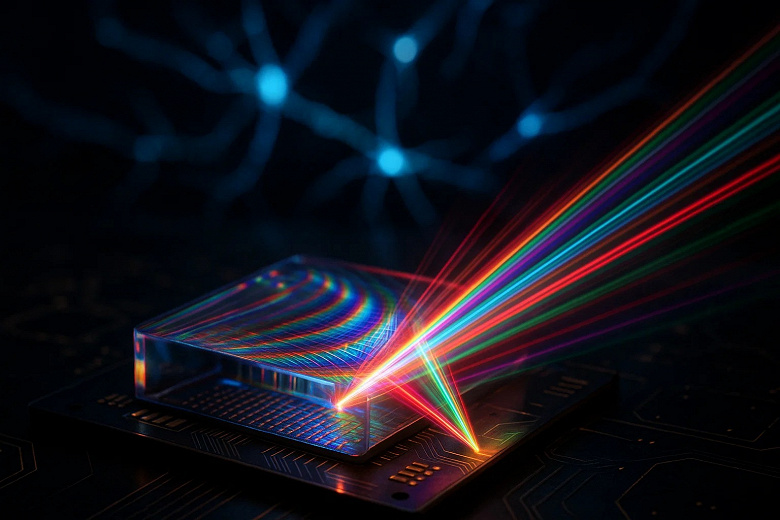Radical Advancement in AI Computing
Scientists from Aalto University in Finland have developed a method of performing the mathematical operations underlying artificial intelligence using just one light pulse. The technology allows calculations to be conducted without electronics, promising a dramatic acceleration of AI systems and reduction of their energy consumption.
Tensor operations – complex mathematical actions necessary for neural networks – are currently performed by graphic processing units (GPUs). These require sequential calculations, limiting speed and efficiency. The new methodology replaces electronics with light: data is encoded in the amplitude and phase of light waves, and their interaction automatically performs calculations. «Our method performs the same operations as today’s GPUs, such as convolutions or attention layers, but at the speed of light,» explains Dr. Yufeng Zhang, lead author of the work. «We use the physical properties of light to simultaneously execute numerous computations.» A key advantage of this approach is parallelism. 

The technology functions passively: computations occur naturally as light passes through the optical system, without additional control. This allows it to be integrated into photonic chips, which are already used, for example, in telecommunications.
Industry Integration: The Path Forward
«The method is compatible with almost any optical platform,» says Professor Zhipei Sun, head of the photonics group. «The next step is to implement this computing scheme into photonic chips to perform complex tasks with minimal energy consumption.»
According to the authors, the technology could be adapted for commercial use within 3 to 5 years. Recent advancements in photonic chip fabrication could accelerate this timeline, furthering the potential development of photonic processors. These processors have the capability to expedite AI applications in fields such as image processing, language analysis, and autonomous systems.
“This groundbreaking approach effectively addresses the main limitations of current AI systems: high energy consumption and computation speed,” notes an industry consultant.[HOLDER:]
In the future, compact, eco-friendly devices could be developed for tasks that today require supercomputers – from medical diagnostics to climate modeling. Scientists are already in talks with technology companies about implementing the method into existing platforms.
As the field of light-based computing continues to evolve, experts anticipate future developments will focus on enhancing the scalability and application range of these innovations, making them more accessible for everyday technology.









